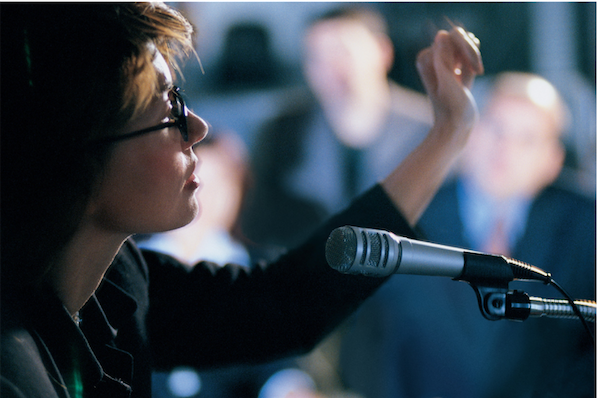We like presentations that are delivered without fear, and without a script. But, if you find yourself in a public speaking circumstance where you need to read from a prepared manuscript, here are five tips to help guarantee smooth delivery.
1) Large Type. Print out your speech in type that is large enough to be read easily from a lectern. Place sheets in sheet protectors and place them in an unobtrusive thin white three-ring binder. Arrange the pages so that there are always two full pages facing you, which minimizes page-turning. That means some sheet protectors will have two pages in them, back-to-back. Here’s a short video showing what that looks like.
2) Practice Reading Aloud. Practice reading out loud and turning the pages. Try to look up from the pages as much as possible so that when you deliver the speech, you will be able to make eye contact with your audience. Use intonation when reading so that you don’t sound monotone or like you are reading it for the first time. Read in a conversational tone. Make sure you are pronouncing all the words you are using correctly.
3) Focus on your vocal variety. Remember that pausing can be powerful. Pause before and after an important point. If you are a natural fast-talker, slow down when you make important points. Practice your pace. Find the right speed. Your goal for your conclusion should be that everyone will know that you are done without you have to say “thank you.” You accomplish that by adjusting your pace and pause, and, to a lesser extent, your pitch and power.
4) Research. Before you speak, find out if the lectern will be lit well enough for you to read. Don’t forget to bring reading glasses if you need them. Also, find out if you will be speaking with a microphone and practice accordingly. If the speech is supposed to be a particular length, practice with a timer. By aware that some people read faster at a live event because of adrenaline.
5) Practice, practice, practice. Always read out loud. Practice reading it in front of friends or family. Record yourself.
By following these tips, you can turn a manuscript speech into a well-delivered presentation.


